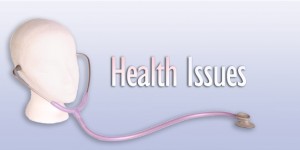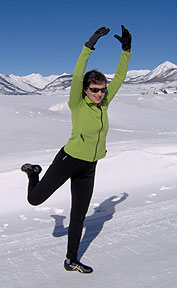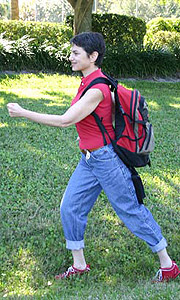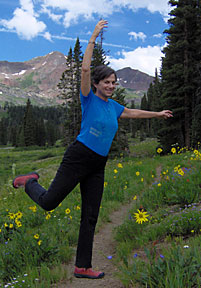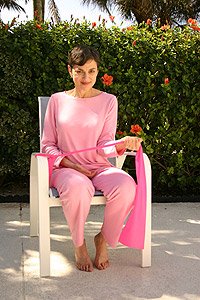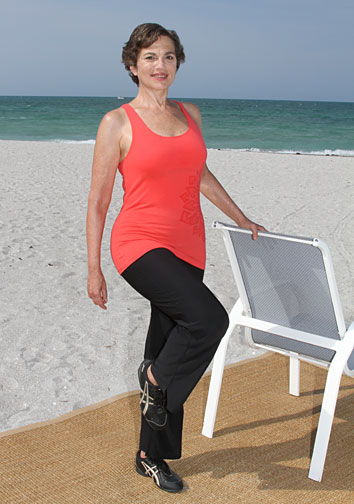EASY CARDIO WORKOUT COMBATS DEPRESSION
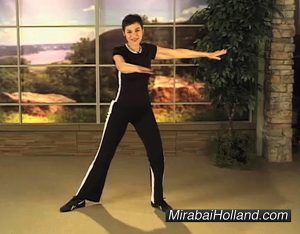 Easy Cardio Workout Combats Depression. I find myself as you may too, for no apparent reason, feeling a little blue. So I dust off my sneakers and get ready to move because I know cardio exercise improves mood.
Easy Cardio Workout Combats Depression. I find myself as you may too, for no apparent reason, feeling a little blue. So I dust off my sneakers and get ready to move because I know cardio exercise improves mood.
Research shows that cardio exercise improves mood because it increases levels of serotonin and endorphins in the brain. These are important neurochemical transmitters, which help to elevate and stabilize your mood.
In fact one of the known causes of depression is a lowered level of serotonin. Aerobic exercise can be as effective as medication for relieving mild to moderate depression in many cases.
Easy Cardio Workout: More Reasons Why Cardio Exercise Improves Mood
There is more to cardio exercise than serotonin and endorphins. It helps lower adrenaline, a chemical associated with stress to help promote relaxation. And as you become more fit you feel better about how you look and feel. This can give you a positive outlook in general. Try some easy aerobics. You may just cardio dance your troubles away. I make sure I’m exercising aerobically most days of the week, at least for 30-60 minutes. I not only feel my spirits lift while I’m exercising but for many hours afterwards. However if you are just starting to exercise or haven’t been exercising for awhile here is a easy cardio Workout video to help you get going:
Are You Depressed?
The standard symptoms for depression are:
- Persistent feelings of sadness or “emptiness”
- Sense of hopelessness, worthlessness, and guilt
- Inability to enjoy ordinary pleasurable activities, including sex
- Noticeable change of appetite, possibly accompanied by significant weight loss or weight gain
- Shifts in sleeping patterns, such as insomnia or sleeping too much
- Difficulty concentrating, persistent irritability, excessive crying
- Preoccupation with thoughts of death or suicide
- Decreased energy, fatigue
- Persistent aches and pains
Many things can cause depression. They range from some medications to low levels of light during the winter months. Alcohol and a poor diet, as well as inherited predisposition, can lead to the condition as well. Before you decide on asking your doctor for an anti-depressant prescription, adopt the healthy lifestyle habits of a nutritious diet, regular exercise and enough sleep. If things don’t improve, of course, seek medical help.
So try my take on the old Arlen & Koehler song lyric that Judy Garland sang, “forget your troubles, come on get happy” you can exercise your blues away with this easy cardio workout!
For more info on health and fitness and at home exercise programs for people over 50 visit www.mirabaiholland.com
EASE IN, BECOME MOBILE, GET STRONG, LIVE LONG!
50% OFF TOTAL MEMBERSHIP ONLINE WKOUT CLUB Code: FAB CLICK HERE

ALL WORKOUT DVDs – FREE USA SHIPPING Code: CLICK HERE
TAKE CHARGE OF YOUR HEALTH! GET STRONG, LIVE LONG! For more info on health and wellness programs please visit www.mirabaiholland.com
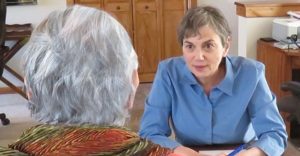 40% OFF FIRST HEALTH COACH SESSION CLICK HERE
40% OFF FIRST HEALTH COACH SESSION CLICK HERE
GREAT FOR WOMEN WHO WANT TO GET HEALTHY & STAY FIT WITH MIRABAI’S SIGNATURE MOVEMENT TECHNIQUE AND HEALTH COACHING SESSIONS THAT TAKES THE PAIN OUT OF THE GAIN! IF YOU ARE STRUGGLING WITH AGE ONSET ISSUES LIKE WEIGHT GAIN, MENOPAUSE, OSTEOPOROSIS, HEART DISEASE, DIABETES, ARTHRITIS AND MORE YOU. Available on Skype or Phone.
For more information about Health & Wellness coaching contact askmirabai@movingfree.com Follow Mirabai Holland, Certified Health Coach & Certified Exercise Physiologist:










